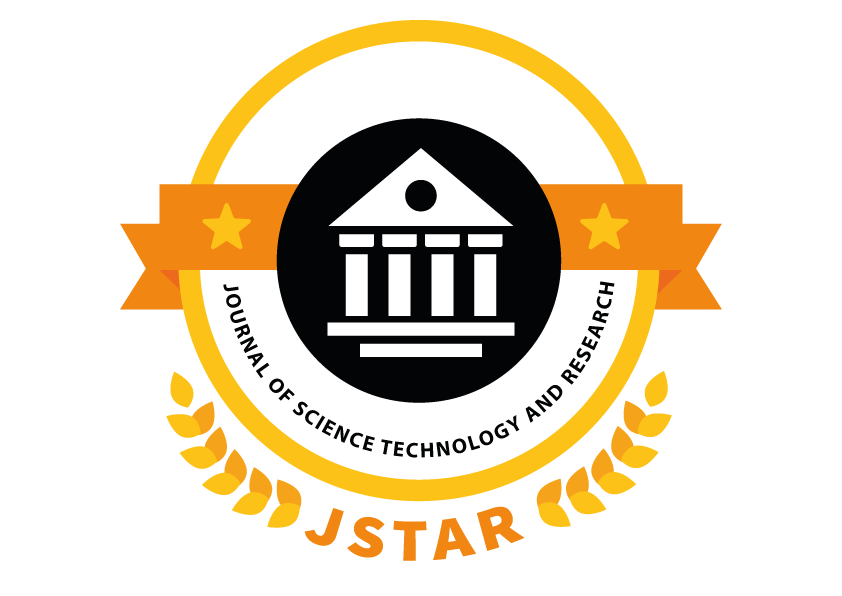Author:
M.Sc Florian Millo, Dr. Muhammad Akram, Dr. Ejaz RafiquePublished in
Journal of Science Technology and Research( Volume , Issue )
1. Aristotle – Physics. Translation by Robin Waterfield, Oxford World’s Classics
2. Philosophical Essays. Translation by Roger Ariew and Daniel Garber
3. Newton, Philosophiae naturalis principia mathematica, London (1687); new English translation of 3rd ed.. The Principia, Mathematical Principles of Natural Philosophy: A New Translation, I. B. Cohen, A. Whitman, trans., U. California Press, Berkeley (1999).
4. Sulthana, T. Anish and Ulageshini, S. and M, Sheik Dawood and Sakena Benazer, S, Analysis of Pandemic COVID-19 Impact in India (June 26, 2020). Journal of Science Technology and Research (JSTAR), Volume No.1, Issue No.1 (2020), Available at SSRN: https://ssrn.com/abstract=3643763
5. J.L. Lagrange, Mecanique analytique, Paris (1788), 2nd ed. (1811);. English translation, Analytical Mechanics, A. Boissonnade, V. N. Vagliente, trans., Kluwer, Dordrecht, the Netherlands (1997).
6. Newton, Arithmetica universalis, Cambridge (1707). . The 1728 English version, Universal Arithmetic, is reprinted in The Mathematical Works of Isaac Newton, vol. 2, D. T. Whiteside, ed., Johnson Reprint Corp, New York (1967), p. 46.
7. Karthick, R and Akram, Muhammad, Anti-Viral Medicinal Plants & Their Chemical Constituents, Experimental and Clinical Pharmacology of Antiviral Plants (June 21, 2020). Journal of Science Technology and Research (JSTAR), Volume No.1, Issue No.1 (2020), Available at SSRN: https://ssrn.com/abstract=3632133
8. Karthick, R and P, Meenalochini and Prabaharan, A.Manoj and Selvaprasanth, P. and M, Sheik Dawood, A Dumb-Bell Shaped Damper with Magnetic Absorber using Ferrofluids (December 2, 2019). International Journal of Recent Technology and Engineering (IJRTE), Volume-8, Issue-4S2, December 2019, Available at SSRN: https://ssrn.com/abstract=3517662 or http://dx.doi.org/10.2139/ssrn.3517662
9. Martin Sahayaraj, J, A Novel Design of Microstrip Antenna for Wireless Applications (June 30, 2020). JSTAR Volume No.1, Issue No.1 (2020), Available at SSRN: https://ssrn.com/abstract=3640920
10. Karthick, R and D, John Pragasam, Design of Low Power MPSoC Architecture using D-R Method (June 10, 2019). Asian Journal of Applied Science and Technology (AJAST), Volume 3, Issue 2, Pages 101-104, April -June 2019, Available at SSRN: https://ssrn.com/abstract=3401644
11. Karthick, R and P, Meenalochini and R, Mohammed Abdullah, A Novel Hybrid Multilevel Inverter with Switch Reduction (June 6, 2020). International Journal of Advanced Science and Technology, Vol. 29, No. 4s, (2020), pp. 3018-3023, Available at SSRN: https://ssrn.com/abstract=3633572
12. G. Galilei, Discorsi e dimostrazioni matematiche, intorno a due nuove Scienze, Leiden (1638);. English translation, Dialogues Concerning Two New Sciences, H. Crew, A. de Salvio, trans., Dover, New York (1954).
13. C. Huygens, Horologium oscillatorium, sive de motu pendulorum ad horologia aptato demonstrationes geometricae, Paris (1673); . English translation, The Pendulum Clock or Geometrical Demonstrations Concerning the Motion of Pendula as Applied to Clocks, R. J. Blackwell, trans., Iowa State U. Press, Ames (1986).
ABSTRACT:
The historical introduction of vis viva begins with early philosophical explorations of motion and energy, particularly in Aristotle’s writings. He examined what causes motion, whether it is real, and how it relates to change. These foundational ideas created a basis for centuries of thought. During the Scientific Revolution, thinkers such as Galileo, Descartes, Huygens, and Leibniz further developed these concepts. Leibniz introduced the term vis viva to describe what we now understand as kinetic energy. He proposed that motion is related to mass and velocity squared, laying the groundwork for modern physics. These early insights evolved into the conservation of energy principle. This review traces the transformation from abstract philosophy to measurable physical principles. By studying the historical introduction of vis viva, we gain insight into how classical mechanics formed. Understanding these early perspectives allows us to appreciate how motion, force, and energy became central to scientific inquiry.
INTRODUCTION:
The historical introduction of vis viva, meaning “living force,” began with Aristotle’s quest to define motion and change. In his work Physics, Aristotle described motion as a transition from potentiality (entelechia) to actuality (energeia). He asked profound questions: What is motion? Why do objects move? Is motion real? These questions set the foundation for later scientific investigation. Aristotle believed that anything capable of causing change must act upon something capable of being changed. Although he lacked mathematical tools, his definitions shaped centuries of debate. It was not until the 16th and 17th centuries that philosophers like Galileo and scientists such as Leibniz redefined motion with mathematics and experimentation. Leibniz’s term vis viva represented a major leap in understanding the relationship between mass, velocity, and energy. This article explores how ideas of motion developed from ancient speculation to modern mechanics. The historical introduction of vis viva provides a rich backdrop for the evolution of physics.
